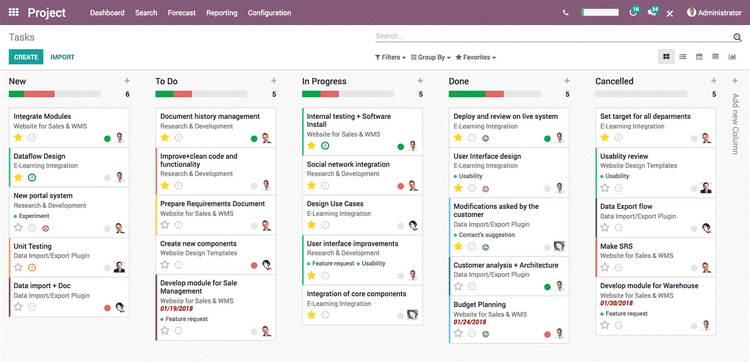The Best Open Source ERP Software
In a market dominated by proprietary systems, we’ve identified the top open-source ERP offering strong features without locking you into a single vendor’s ecosystem. We weighed factors like customization flexibility, integration options, and community support.

- Community version is free
- Heavy customization options
- Double-entry inventory system
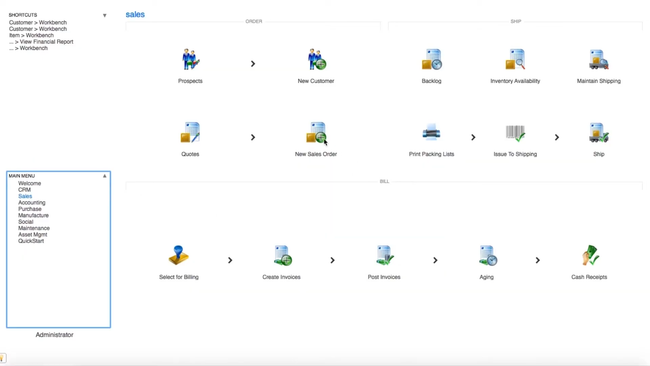
- Free trial available
- New eCommerce additions
- Platform agnostic
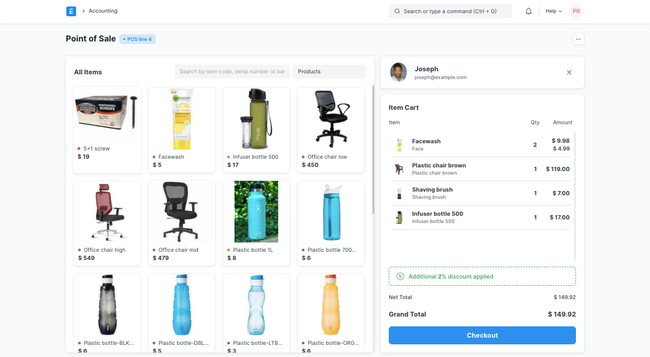
- Free trial available
- New eCommerce additions
- Platform agnostic
Open source ERP software is an enterprise resource planning system with publicly available source code. We used our advanced review methodology to evaluate and rank the top open source ERP software on the market today.
- Odoo: Best Free Option
- xTuple: Best for Manufacturing
- ERPNext: Best for Small Businesses
- Dolibarr: Best CRM Tools
- metafresh: Best Mobile Support
- Bitrix24: Best eCommerce Tools
- TallyPrime: Best Multi-Company Support
Odoo - Best Free Option
Odoo Community is available as an open-source version. It’s free to download, use, and modify—no licensing fees required. You’ll have access to a suite of integrated business apps for CRM, inventory, sales, invoicing, payments, and expense management. Its adaptability and extensive feature set make it a good fit for businesses seeking an all-in-one platform.
Odoo’s open-source nature supports a collaborative environment, with a community of over 100,000 developers contributing to its development. This ensures that Odoo is continuously evolving and staying ahead with technological advancements. The platform’s flexibility is further enhanced by the availability of over 40,000 community apps, allowing businesses to customize and extend their Odoo implementation to meet unique business requirements.
However, Odoo Community users won’t have dedicated technical support and will need to troubleshoot issues on their own. Additionally, some features are more limited. For example, accounting is basic compared to Odoo Enterprise, focusing only on essential tasks like invoicing.
xTuple - Best for Manufacturing
xTuple delivers a highly affordable ERP system tailored for the manufacturing sector. As an open-source platform, it allows you to adapt it to your specific operations without the high customization costs typical of many ERP solutions. With open access to the code, you can refine workflows and tweak the system’s functionality as your business grows and evolves.
Beyond affordability, xTuple’s manufacturing-focused tools add further value, especially its production scheduling and material requirements planning (MRP) functionalities. The MRP tool gives you a real-time look into purchasing, sales, and production activities.
Through customizable planner codes, you can streamline complex orders by grouping items for production together. Custom planner codes also let you set inventory handling rules like reorder points and lead times. This kind of flexibility, powered by its open-source foundation, makes it quite adept at keeping raw material levels and manufacturing activities aligned. Plus, you can integrate the add-on module xTuple Connect to schedule automatic MRP runs.
xTuple’s flexibility extends to the production methods it supports, including discrete, process, make-to-order, and engineer-to-order processes. However, it lacks product matrices for variations like size or color, so it’s not recommended for apparel manufacturers.
ERPNext - Best for Small Businesses
ERPNext offers small to mid-sized companies an extensive feature set and open-source platform that encourages customization and flexibility. ERPNext is designed to be accessible and user-friendly, allowing for self-implementation, which is useful for mid-sized organizations looking to minimize deployment costs. The platform’s support for multi-currency and reporting systems further enhances its suitability for growing businesses operating in a global marketplace.
ERPNext offers specialized modules that support a wide range of industries, adapting to the unique requirements of sectors such as agriculture, manufacturing, retail, distribution, logistics, financial services, education, healthcare, and non-profit. This level of industry-specific support underscores its versatility and ability to meet the nuanced needs of mid-market companies across verticals.
Dolibarr - Best CRM Tools
Dolibarr is an open-source ERP and CRM software best suited for freelancers, small organizations, and SMBs. Its intuitive design helps users navigate the system efficiently, making CRM tasks like managing contacts, activities, and sales opportunities more straightforward. Users can enable only the features they need, including various CRM functionalities like lead and opportunity management, customer support, and marketing automation. We found Dolibarr lightweight and modular, highly adaptable to specific business needs.
Dolibarr offers many customization options, allowing businesses to adapt CRM tools to their unique processes and workflows. Additionally, the platform offers integration capabilities with various third-party apps like WooCommerce and Paypal. This allows businesses to connect Dolibarr with other software, such as email marketing tools, social media platforms, and accounting software, creating a more cohesive and efficient technology ecosystem.
metafresh - Best Mobile Support
metafresh delivers flexibility and mobile usability. Rather than offering a dedicated mobile app, it’s built with a responsive design. This means its user interface automatically adjusts to fit the screen size and resolution of various devices, including smartphones and tablets. As an open-source platform, there are no license fees. Users can enjoy the full version and all updates free of charge. We found metafresh applicable to many industries, including eCommerce, wholesale, manufacturing, and more.
metasfresh is designed to adapt to business requirements, often without the need for code adjustments. The platform provides a customizable enterprise solution that grows with businesses. With its cloud architecture and browser-based interface, metasfresh ensures full and secure access to company data from anywhere worldwide, facilitating on-the-go management. Weekly releases ensure users benefit from the latest improvements and developments continuously incorporated into metasfresh.
Bitrix24 - Best eCommerce Tools
Bitrix24 integrates CRM, HR, and task management into a single solution, making it useful for eCommerce businesses. We found its eCommerce support extensive, enabling businesses to link their online stores with the platform to efficiently manage sales, customer interactions, and marketing efforts.
With features designed for sales, marketing, communication, project management, and online collaboration, Bitrix24 is ideal for businesses looking to enhance their eCommerce capabilities. The platform is unique in offering its services to unlimited users even on its free plan, which includes essential tools for intranet, HR, CRM, project management, and more. With dedicated mobile applications, Bitrix24 ensures that eCommerce businesses can operate flexibly. It also offers a high level of customization and integration options, allowing businesses to connect with various third-party services and tailor the system to their specific needs.
TallyPrime - Best Multi-Company Support
TallyPrime allows businesses to manage the accounts and operations of multiple companies within the same software environment. Users can easily switch between companies, consolidate reports, and manage financials for each entity without logging in and out of different systems. With TallyPrime, businesses can record transactions in any currency and view reports in the base or transaction currency. This flexibility is crucial for businesses that deal with international clients or suppliers.
The software supports consolidated financial statements, crucial for businesses operating multiple companies. This feature enables businesses to get an aggregated view of the fiscal performance and health of the entire group, aiding in strategic decision-making.
What Is Open Source ERP Software?
Open source ERP software is an enterprise resource planning system with source code anyone can inspect, modify, or enhance. This lets users and businesses create and customize software as they see fit rather than pay for these services through a software vendor. Typically available for free, open-source ERP software is significantly more cost-effective than proprietary or closed-source programs.
Open source ERP software includes all of the needed functionality that regular ERP software has. This includes invoicing, inventory management, sales management via eCommerce platforms, human resources, and project management. Yet companies with open source ERP gain more control over their IT investment and get insurance against vendor inattention.
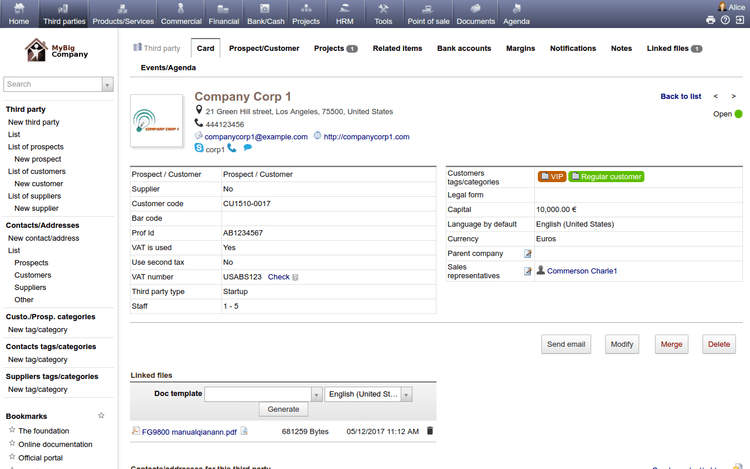
Is Open Source ERP Software Really Free?
If an ERP solution is advertised as open-source, the source code is 100% free. Once installed, you’ll have full access to the software at no cost.
To better illustrate the difference between free, open source, and paid options, you can view our table below:
| – | Free | Open Source | Paid |
|---|---|---|---|
| Description: | Simple, reduced version with limited features | Source code is made publicly available | Licensed and bought from a software provider |
| Target Market: | Start-ups and small businesses | Knowledgeable IT departments | Medium to large businesses |
| Advantages: | Free | Community-backed | Robust features |
| Disadvantages: | Limited functions | Requires a higher level of IT knowledge | Expensive to implement and maintain |
Some open source software developers offer paid versions with additional functionality. There might also be additional costs for adding new users or increasing data storage. However, the source code will still be free.
Other costs an open source ERP software might have include:
- Implementation fees: Setting up the software correctly may require the assistance of the developer or IT consultants.
- Deployment method: On-premise implementation can require new hardware to run. A cloud-based deployment can cost around $40 per month for a VPS.
- Support: Maintaining the ERP can lead to costs from in-house IT teams or hiring outside specialists.
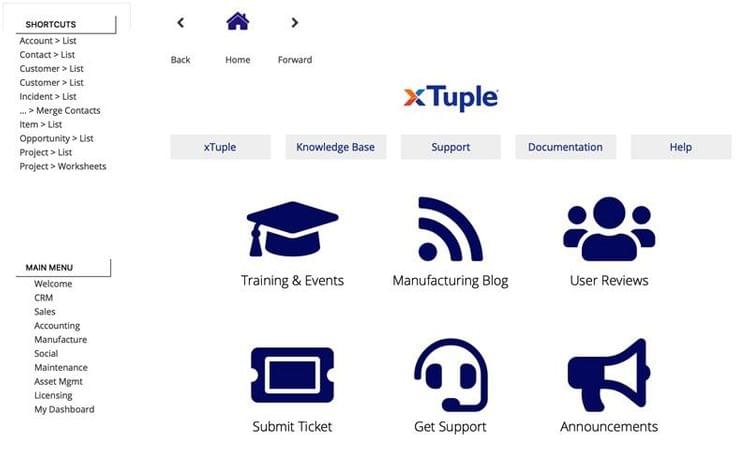
Benefits of Open Source ERP Software
There are many benefits to using open source ERP solutions over some well-known ERP options like Oracle or SAP. It’s usually available for free or at a significantly reduced cost. A free ERP system can provide major savings to businesses of all sizes.
Other top benefits include:
Freedom from Licensing
Companies prefer open-source enterprise resource planning software mainly because it offers lower costs and ease of customization. These benefits come from a lack of licensing usually found in a commercial ERP system.
Open source ERP software systems use open source databases and operating systems, making it a license-free option. Commercial systems may require the use of expensive commercial databases and operating systems. Open source ERP software means you don’t need to rely on proprietary software, which may not be as open to product development ideas.
Community Support
Since open source ERP systems are developed by a community, they rely on input from users, which usually come from passionate developers. In-house IT departments can benefit from having a community-driven support network. While very new and experimental, IT professionals can use the community to solve problems instead of relying on the vendor to solve software issues at a high cost.
Fully Customizable and Scalable
The flexibility of open source ERP software remains one of the top reasons to consider using one. Access to the source data allows developers to improve existing code. These improvements are usually shared within a community and made easy to implement. It also allows your in-house users and participants to modify and redistribute the underlying source code at will. Overall, open source ERP systems are far easier to upgrade and scale.
The best benefit of heavy customization capabilities is that the software can be fine-tuned to your organization’s needs. Any changes to the program code or added functionalities created by the development community also help save costs on paying a commercial software provider to custom-create that feature for you.
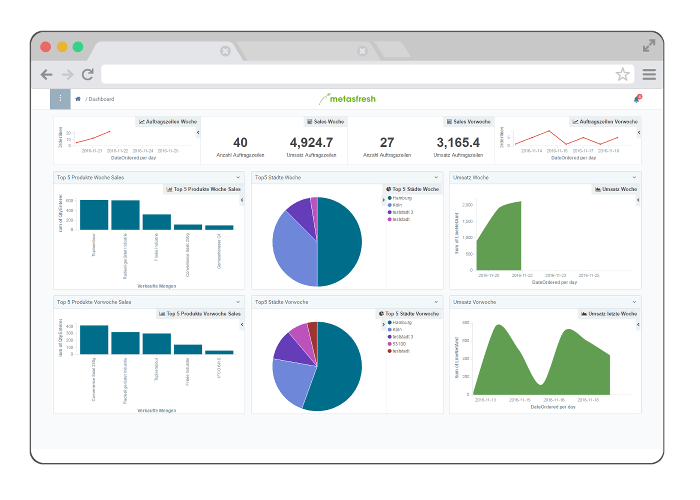
Drawbacks of Open Source ERP Software to Consider
Implementing an open source ERP system isn’t without certain drawbacks. Your business must weigh the pros and cons equally to determine if open source ERP software is right for you.
Security Concerns
A common misconception with open source software is the perceived lack of security. This can cause concerns when housing sensitive financial data in the system. Fortunately, the availability of source code has no impact on the operational security of the software. Because of this, open source ERP is no more or less secure than a commercially developed ERP system. However, as the purchasing company is usually responsible for both the implementation and further development of the system, open source ERP can be considered a slightly more risky option in case of errors or system failures.
Limited Support
Community-supported products will only be as successful as the community size allows for. Using a lesser-known option will yield fewer results when looking for troubleshooting assistance. If a company doesn’t buy a support plan from a provider, you’ll have to rely on your internal IT staff or the volunteer community, which poses uncertainty in a major system failure. If a company does buy a support plan from a provider, it may also be instead of a package deal with other advanced features, proprietary modules, or training, which could be just as sizable of an investment as what you would get with a normal ERP software.
No Easy Installation or Training Process
While open source ERP does not require any substantial licensing costs, it could still result in higher IT costs if you are making your own customizations in-house. If not, you must pay a developer to make the needed changes. And if you don’t pay for professional training, you’ll be looking to educate your entire staff solely on documentation found online and through support communities, which may slow down your implementation process.
